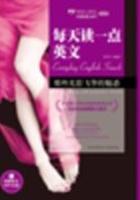恋上哈瓦那雪茄
Even before you come to grips with the cigar itself, there are small pleasures to be enjoyed, starting with the box—an ornately decorated yet functional relic from the days before the invention of plastic. A true cigar box is made from cedarwood, which allows the tobacco to breathe and to continue maturing. It is sealed with what looks like a high-denomination bank note (the export warranty of the respective government), and it is often covered with the kind of baroque graphic art that conjures up thoughts of brandy and boudoirs: curlicues, gold embossing, vignettes of white-bosomed ladies and bewhiskered gentlemen, florid typography—everything, in fact, that nineteenth-century pop artists could lay their hands on.
When you open the box, your nose is treated to a classic aroma, a bouquet that deserves a few quiet moments of appreciation before you proceed any further. It is a particularly masculine scent, and men have been known to line their clothes closets with the thin leaves of cedarwood that separate the fat rows of cigars. (The thought of walking around smelling like a human corona may not appeal to all of us, but there are, God knows, worse things to smell of, as anyone who has been ambushed and sprayed on his way through the cosmetics department at Bloomingdale’s will confirm.)
Now we come to the cigars, looking as prosperous and well filled as a group of investment bankers after a killing. This is the beginning of what should be at least forty-five minutes of unhurried enjoyment. Cigars should never be rushed, or puffed absentmindedly while you’re doing deals on the phone. The more attention you give them, the more pleasure they will give you, so if you don’t have a quiet hour or so, save the cigar until later. The leisurely ceremonial of preparing and smoking one of nature’s minor triumphs is worth the investment in time.
A knowledgeable smoker will always inspect his cigar before committing himself. This is not an affectation; good cigars are made by human hands, which are fallible, and are sometimes stored in unsuitable conditions, which can be fatal. A cigar in its prime will feel firm as you roll it between thumb and index finger, and slightly elastic as you squeeze it. Brittle cigars will not taste good, and should be put aside for less discriminating smokers, such as politicians.
If the cigar pleases your eye, your nose, and your fingers, the next step is to make an incision in the wrapper at the head so that the smoke can be drawn through. Surgical techniques vary from smoker to smoker. Rambo, should he ever do anything as un-American as smoke a Cuban cigar, would probably bite off the end. More delicate souls will use a cigar cutter or even a sharp fingernail to make a small opening. The cut should be clean, and not too deep; if you stab a cigar in the head with a penknife or a toothpick, you will create a funnel, which results in a hot, bitter smoke.
The last stage before lighting up is optional. Should you remove the band—that miniature work of art just below the head—or should you leave it on? When it was first invented (credit is often given to Gustave Bock, a Dutchman), the band had a practical purpose, which was to prevent the outer wrapper from coming adrift as the cigar heated up. Nowadays, with more reliable gumming methods, the risk of losing the wrapper is very slight, so it comes down to a question of aesthetics. Do you prefer your cigars to be decorated or totally nude? Either is fine, and only pedants make a fuss about it.
So you’ve rolled and you’ve squeezed and you’ve sniffed and you’ve cut, and now you are ready to light up. Once again, a certain finesse is required, and certain laws of nature should be observed. The most important rule is never to use a gas lighter unless you like the taste of gas fumes. Similarly, don’t be tempted to lean across the dinner table and gaze into the décolletage of your beloved as you light up from a candle. Wax and tobacco don’t mix. Use a match. When you have the cigar in your mouth, bring the flame close to the end (about one third of an inch away) and rotate it so that you make an even burn that starts at the rim and spreads to the center.














